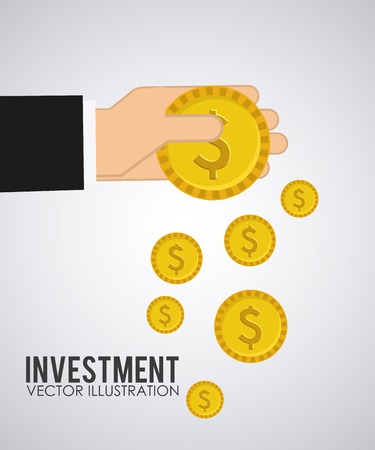1. Understanding Dividend Stocks
Dividend stocks are shares of companies that regularly distribute a portion of their earnings to shareholders in the form of dividends. These payments can provide investors with a steady income stream while also offering the potential for long-term capital appreciation.
How Do Dividend Stocks Work?
When a company earns profits, it can choose to reinvest them back into the business or distribute a portion to shareholders as dividends. These dividends are typically paid out on a regular basis—monthly, quarterly, or annually—depending on the companys policy.
(1) Dividend Yield
The dividend yield is a key metric used to evaluate dividend stocks. It is calculated using the following formula:
| Metric | Formula |
|---|---|
| Dividend Yield (%) | (Annual Dividend per Share ÷ Stock Price) × 100 |
A higher yield may indicate strong income potential, but its important to assess whether the dividend is sustainable over time.
(2) Payout Ratio
The payout ratio measures how much of a companys earnings are being paid out as dividends. It is calculated as:
| Metric | Formula |
|---|---|
| Payout Ratio (%) | (Dividends per Share ÷ Earnings per Share) × 100 |
A lower payout ratio suggests that the company retains enough earnings for growth while still rewarding shareholders.
Why Are Dividend Stocks Powerful for Long-Term Wealth Building?
(1) Passive Income Generation
One of the biggest advantages of dividend stocks is that they provide consistent cash flow. Unlike relying solely on stock price appreciation, investors receive regular payments, which can be reinvested or used as income.
(2) Compounding Growth Through Dividend Reinvestment
Reinvesting dividends allows investors to purchase additional shares over time, creating a compounding effect that accelerates wealth accumulation.
(3) Stability and Lower Volatility
Companies that pay dividends are often well-established and financially stable. This can make dividend stocks less volatile compared to non-dividend-paying stocks, providing a more reliable investment option during market downturns.
(4) Protection Against Inflation
Many dividend-paying companies increase their payouts over time, helping investors keep up with inflation and maintain purchasing power.
Understanding these fundamentals will help you identify high-quality dividend stocks that align with your long-term financial goals.
2. Key Metrics to Evaluate Dividend Stocks
When choosing dividend stocks for long-term wealth generation, its crucial to analyze key financial metrics. These indicators help determine whether a company can sustain and grow its dividend payments over time. Here are the most important metrics to consider:
1. Dividend Yield
Dividend yield measures the annual dividend payment as a percentage of the stocks current price. It helps investors assess how much income they can expect relative to their investment.
| Dividend Yield (%) | Interpretation |
|---|---|
| Below 2% | Low yield, but may indicate strong growth potential |
| 2% – 4% | Moderate yield, often found in stable companies |
| Above 4% | High yield, but requires further analysis for sustainability |
2. Payout Ratio
The payout ratio shows the percentage of earnings a company distributes as dividends. A lower ratio suggests the company retains earnings for growth, while a higher ratio may indicate limited reinvestment opportunities.
- A payout ratio below 50% is generally considered sustainable.
- A ratio between 50%-70% is acceptable for mature companies with stable earnings.
- A ratio above 70% could signal risk if earnings decline.
3. Dividend Growth Rate
A consistent increase in dividends over time indicates financial health and managements commitment to rewarding shareholders.
(1) Why It Matters?
A growing dividend can help offset inflation and increase passive income streams over time.
(2) What to Look For?
- A steady or increasing dividend growth rate over the past 5-10 years.
- A balance between dividend growth and earnings stability.
4. Earnings Stability
A company must have consistent earnings growth to support its dividend payments. Volatile earnings may lead to unpredictable dividends or cuts.
(1) How to Assess Earnings Stability?
- Check historical revenue and profit trends.
- Avoid companies with frequent losses or declining profits.
- Look for businesses with strong competitive advantages and resilient industries.
By evaluating these key metrics, you can identify high-quality dividend stocks that provide reliable income and long-term wealth generation.

3. Industries and Sectors for Reliable Dividend Stocks
When it comes to selecting dividend stocks for long-term wealth generation, choosing the right industries and sectors is crucial. Some industries are more reliable for dividends due to their stable demand, strong cash flows, and consistent profitability. Below, we explore key sectors known for offering stable and growing dividends.
(1) Utilities
Utilities companies provide essential services such as electricity, water, and gas. Because these services are always in demand, utility companies tend to generate consistent revenue regardless of economic conditions. Many utilities operate under regulated markets, ensuring predictable earnings and steady dividend payouts.
Key Benefits of Utility Stocks:
- Stable cash flow due to essential services
- Regulated pricing offers predictable revenue
- Historically strong dividend yields
(2) Consumer Staples
The consumer staples sector includes companies that produce everyday necessities like food, beverages, household goods, and personal care products. These businesses tend to perform well even during economic downturns because consumers continue purchasing their products.
Top Reasons to Consider Consumer Staples:
- Consistent demand regardless of economic cycles
- Many established brands with pricing power
- A track record of steady dividend growth
(3) Healthcare
The healthcare sector includes pharmaceutical companies, medical device manufacturers, and healthcare service providers. With an aging population and ongoing medical advancements, healthcare remains a resilient industry that supports long-term dividend stability.
Main Advantages of Healthcare Stocks:
- Aging populations drive long-term demand
- Innovation leads to new revenue opportunities
- Diverse business models support financial stability
(4) Comparison of Dividend Reliability by Sector
| Sectors | Dividend Stability | Growth Potential |
|---|---|---|
| Utilities | High | Moderate |
| Consumer Staples | High | Moderate to High |
| Healthcare | Moderate to High | High |
Selecting dividend stocks from these reliable industries can help ensure steady income and long-term wealth growth. By focusing on sectors with strong fundamentals and consistent demand, investors can build a more secure dividend portfolio.
4. Avoiding Dividend Traps
When investing in dividend stocks, its crucial to avoid common pitfalls that can lead to poor returns or even losses. Some companies may offer high dividend yields, but if their financials are weak, those dividends may not be sustainable. Here’s how to recognize and steer clear of dividend traps.
Identifying Unsustainable Dividends
A company with an unusually high dividend yield might seem attractive, but it could be a red flag. High yields can result from a falling stock price rather than strong financial performance. Check the company’s payout ratio—if its consistently above 80%, there’s a higher risk that dividends could be cut.
Warning Signs of Declining Revenue
If a companys revenue is shrinking over time, it may struggle to maintain its dividend payments. Consistent revenue growth is a sign of a healthy business, while declining revenue suggests potential trouble ahead.
(1) Review Revenue Trends
Look at the company’s revenue over the past five to ten years. A steady decline is a warning sign that the business might not sustain its current dividend payouts.
(2) Compare Industry Performance
If the companys competitors are growing but it isnt, this could indicate deeper operational or strategic issues affecting its long-term stability.
Avoid Companies with Excessive Debt
Too much debt can put pressure on a company’s ability to pay dividends. If most of its earnings go toward paying off interest and loans, future dividends may be at risk.
(1) Check the Debt-to-Equity Ratio
A high debt-to-equity ratio (above 2.0) suggests that a company relies heavily on borrowing rather than profits to fund operations and dividends.
(2) Assess Interest Coverage Ratio
This ratio measures how easily a company can pay its interest expenses with its earnings. A ratio below 2.0 is concerning, as it indicates financial strain.
Key Indicators of Dividend Traps
| Dividend Trap | Warning Sign |
|---|---|
| Unsustainable Dividends | Payout ratio consistently above 80% |
| Declining Revenue | Revenue shrinking over multiple years |
| High Debt Levels | Debt-to-equity ratio above 2.0 or low interest coverage ratio |
Avoiding dividend traps requires careful analysis of financial metrics and industry trends. By focusing on sustainable dividends from financially healthy companies, you can build a strong portfolio for long-term wealth generation.
5. Building a Diversified Dividend Portfolio
When it comes to long-term wealth generation through dividend stocks, diversification is key. A well-balanced portfolio helps manage risk while ensuring consistent income and potential capital appreciation. By mixing high-yield stocks with dividend growth stocks, you can create a stable and rewarding investment strategy.
Why Diversification Matters
Diversifying your dividend portfolio reduces the risk of relying too heavily on a single sector or company. Market conditions vary, and different industries perform better at different times. A diverse portfolio ensures that even if one sector underperforms, others can help maintain overall stability.
Types of Dividend Stocks to Include
To achieve balance, consider including a mix of the following types of dividend stocks:
| Type of Dividend Stock | Description | Example Sectors |
|---|---|---|
| High-Yield Dividend Stocks | Companies that pay above-average dividend yields, providing strong income streams. | Utilities, Real Estate Investment Trusts (REITs), Telecom |
| Dividend Growth Stocks | Companies with a history of consistently increasing their dividends over time. | Technology, Consumer Goods, Healthcare |
| Blue-Chip Dividend Stocks | Larger, well-established companies with reliable dividends and solid financials. | Banks, Industrials, Energy |
| International Dividend Stocks | Diversifies exposure by investing in companies outside the U.S. | Emerging Markets, European Multinationals |
How to Balance Your Portfolio
A successful dividend portfolio should have an optimal mix of high-yield stocks for immediate income and dividend growth stocks for long-term appreciation. Here’s how you can structure it:
(1) Allocate Based on Risk Tolerance
If you prefer stability, lean more towards blue-chip and dividend growth stocks. If you’re willing to take on slightly more risk for higher returns, include some high-yield investments.
(2) Spread Across Multiple Sectors
Avoid overexposure to any single industry. Spread your investments across sectors such as technology, healthcare, consumer staples, and energy to minimize risk.
(3) Reinvest Dividends Strategically
You can accelerate wealth generation by reinvesting dividends into growing companies rather than withdrawing them for income.
(1) Use a Dividend Reinvestment Plan (DRIP)
This allows you to automatically buy more shares using your dividends without paying trading fees.
(2) Manually Reinvest in High-Growth Stocks
If you prefer control over where your money goes, reinvest dividends into companies with strong future potential.
Monitoring and Adjusting Your Portfolio
Your portfolio needs regular review to ensure it remains balanced and aligned with your financial goals. Consider these steps:
(1) Review Performance Annually
An annual checkup helps you assess which stocks are performing well and whether any adjustments are needed.
(2) Watch for Changes in Dividend Payouts
If a company cuts or suspends its dividend, evaluate whether it still fits your investment strategy.
(3) Stay Updated on Economic Trends
Evolving market conditions can affect different industries differently. Keeping up with trends helps you make informed decisions.
6. Reinvesting Dividends for Compound Growth
One of the most powerful strategies for long-term wealth generation is reinvesting your dividends. Instead of taking cash payouts, you can use those dividends to purchase more shares of the same stock. Over time, this compounding effect can significantly increase your investment returns.
How Dividend Reinvestment Works
Dividend reinvestment allows investors to automatically reinvest their earned dividends into additional shares of stock. Many companies offer a Dividend Reinvestment Plan (DRIP), which enables shareholders to buy new shares without paying extra brokerage fees.
(1) Example of Dividend Reinvestment
Let’s say you own 100 shares of a dividend-paying stock that distributes $2 per share annually. If you take the dividends in cash, you receive $200 each year. However, if you reinvest:
- You use the $200 to buy more shares.
- Your next dividend payment increases because you own more shares.
- This cycle repeats, leading to exponential growth over time.
(2) The Impact of Compounding Over Time
The longer you reinvest your dividends, the greater the impact of compounding. Here’s an example showing how an initial $10,000 investment grows over 20 years with and without dividend reinvestment:
| Year | Without Reinvestment | With Reinvestment |
|---|---|---|
| 0 | $10,000 | $10,000 |
| 5 | $12,500 | $14,693 |
| 10 | $15,625 | $21,589 |
| 15 | $19,531 | $31,743 |
| 20 | $24,414 | $46,610 |
This table illustrates how reinvesting dividends accelerates portfolio growth compared to simply collecting cash payouts.
Benefits of Dividend Reinvestment
(1) Accelerated Wealth Accumulation
The compounding effect means that even small dividend payments can lead to significant portfolio growth over decades.
(2) Lower Average Cost Per Share
When reinvesting dividends regularly, you automatically buy more shares at different price points. This dollar-cost averaging strategy helps reduce volatility risks.
(3) Passive Growth Without Additional Investments
If you continuously reinvest dividends, your holdings grow without adding extra capital from your pocket.


